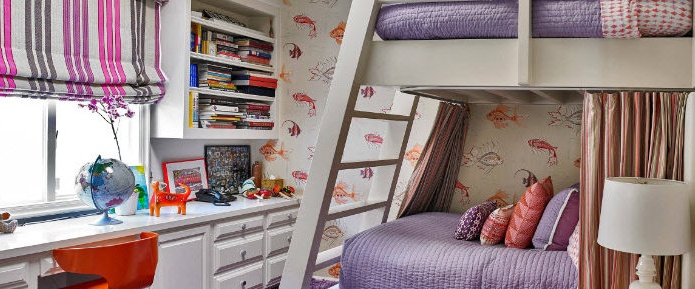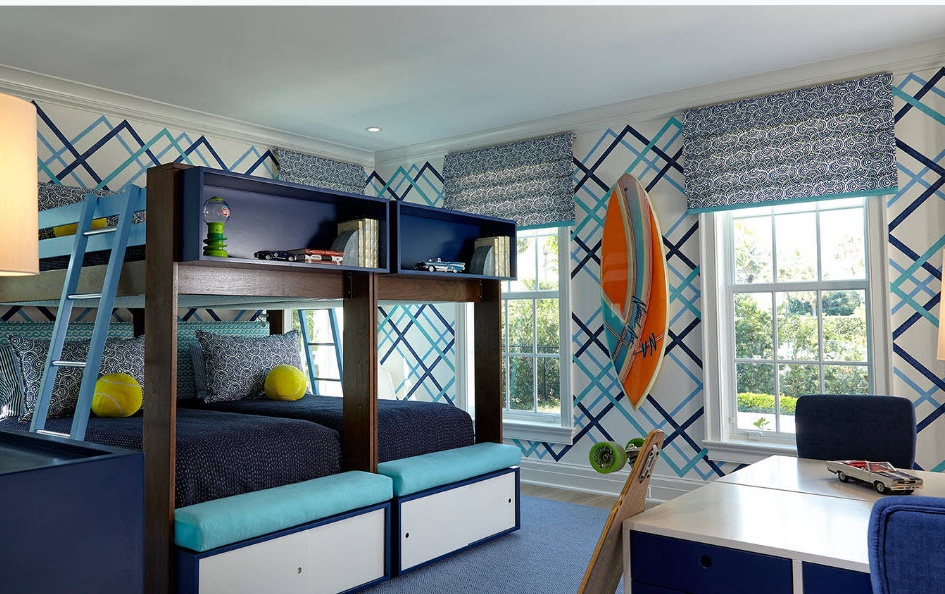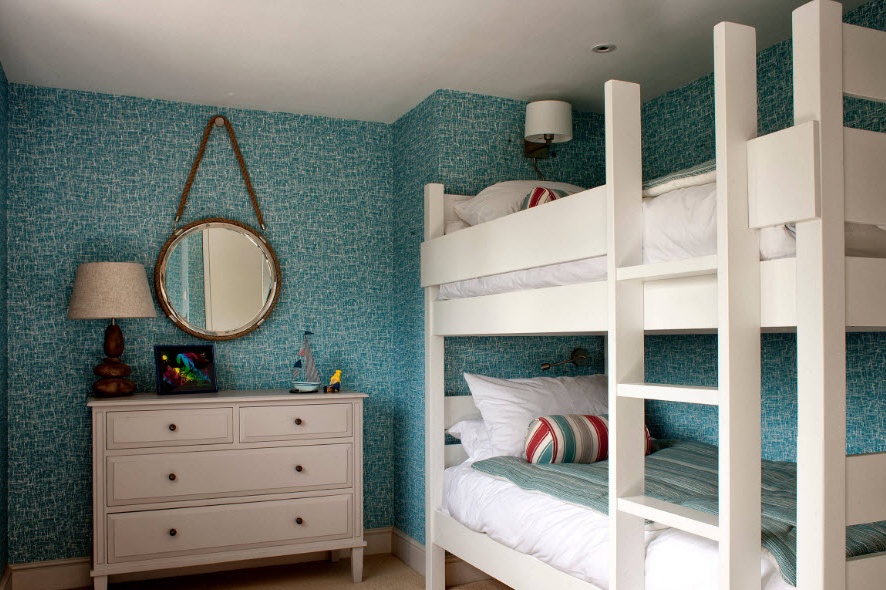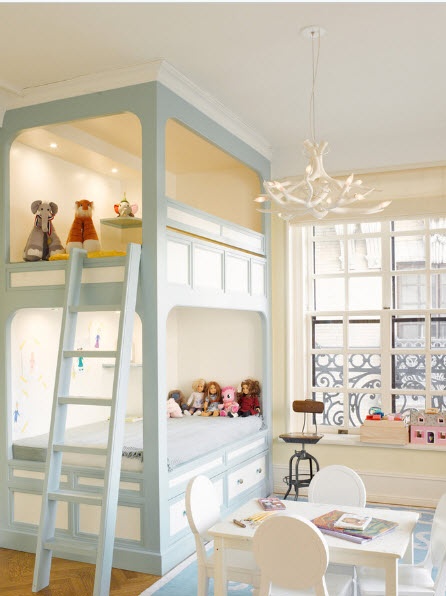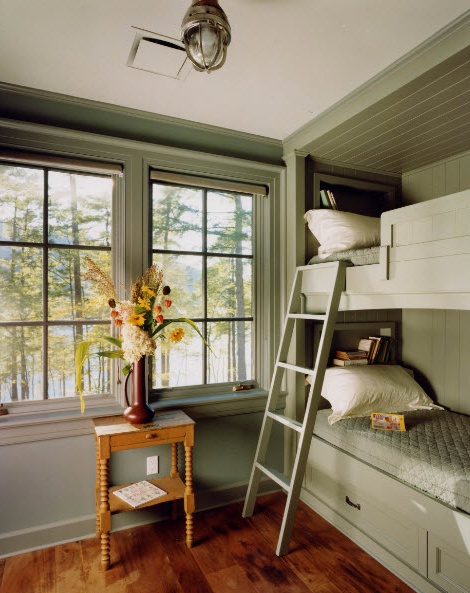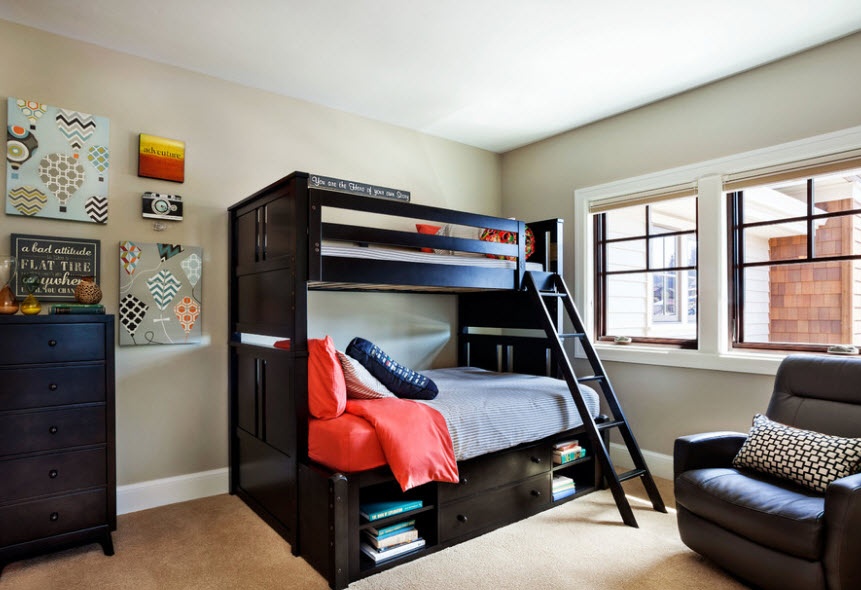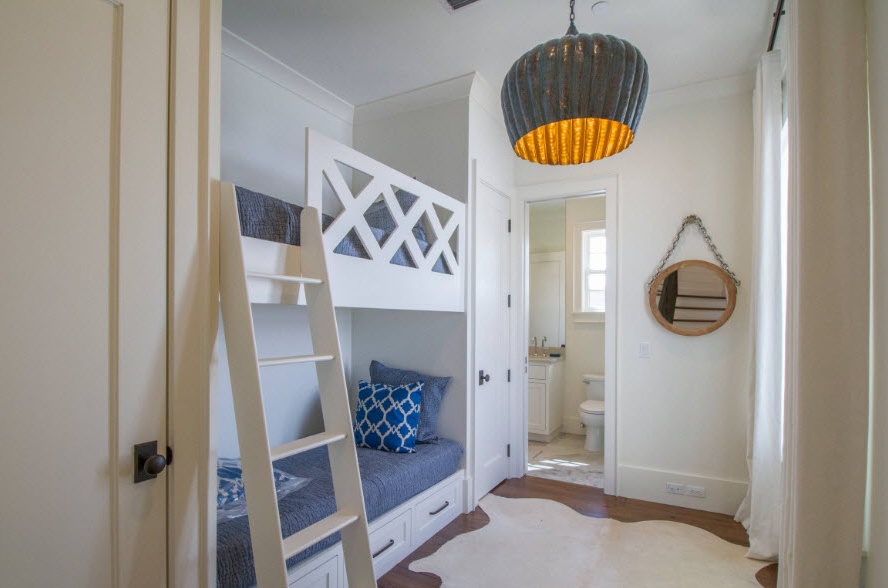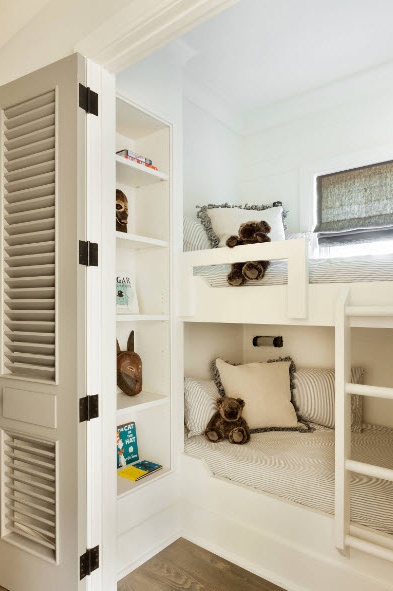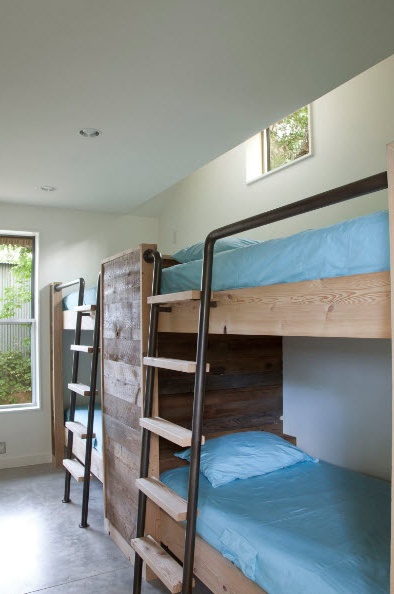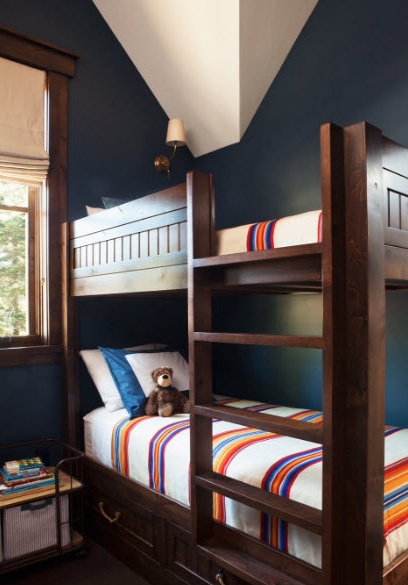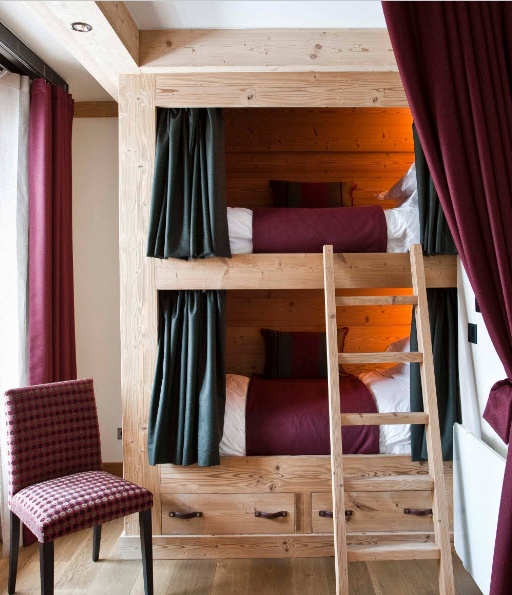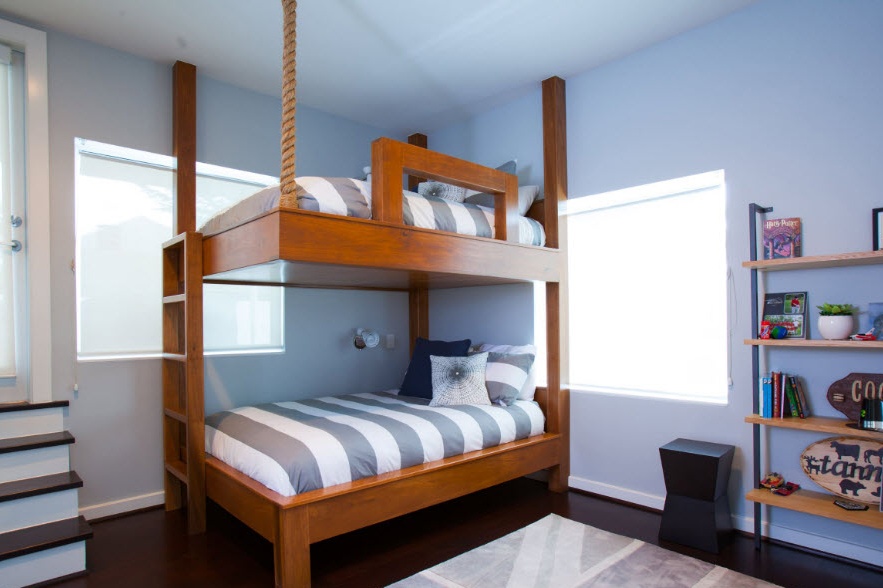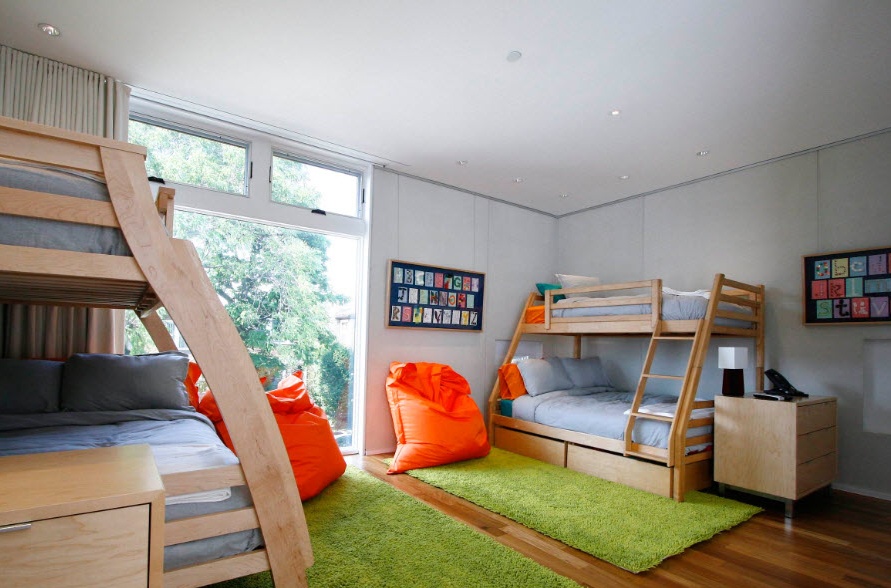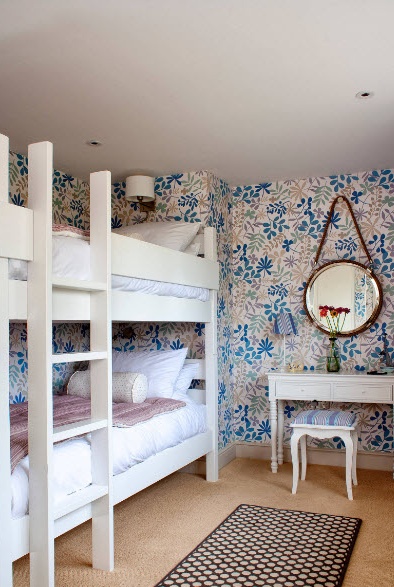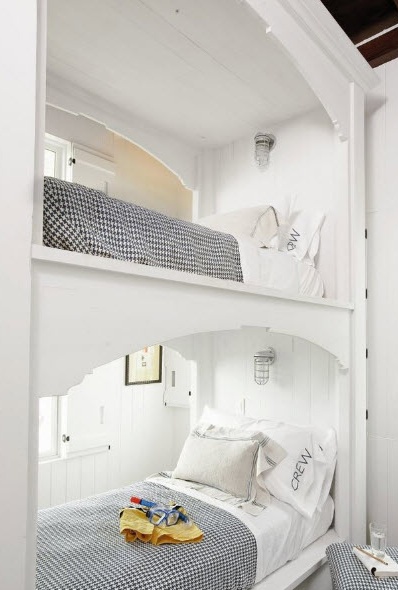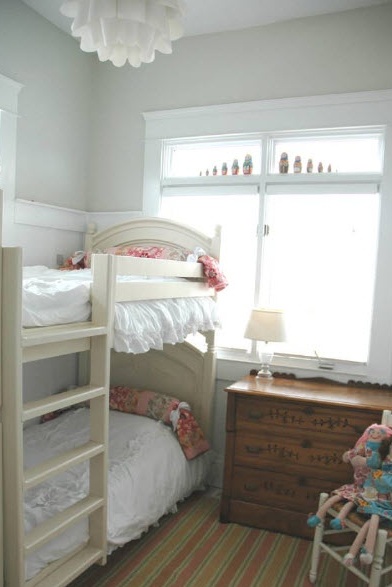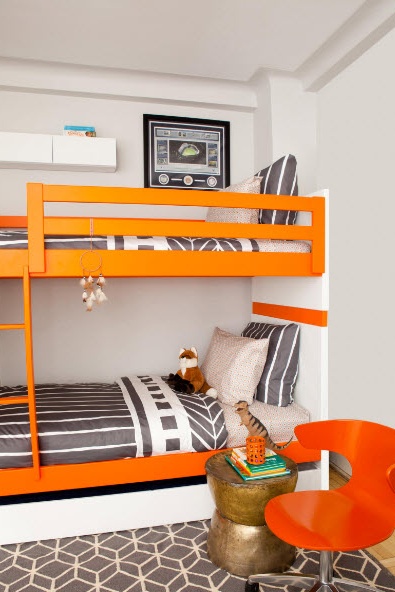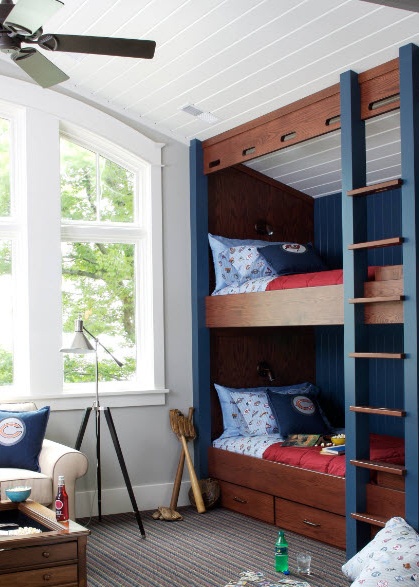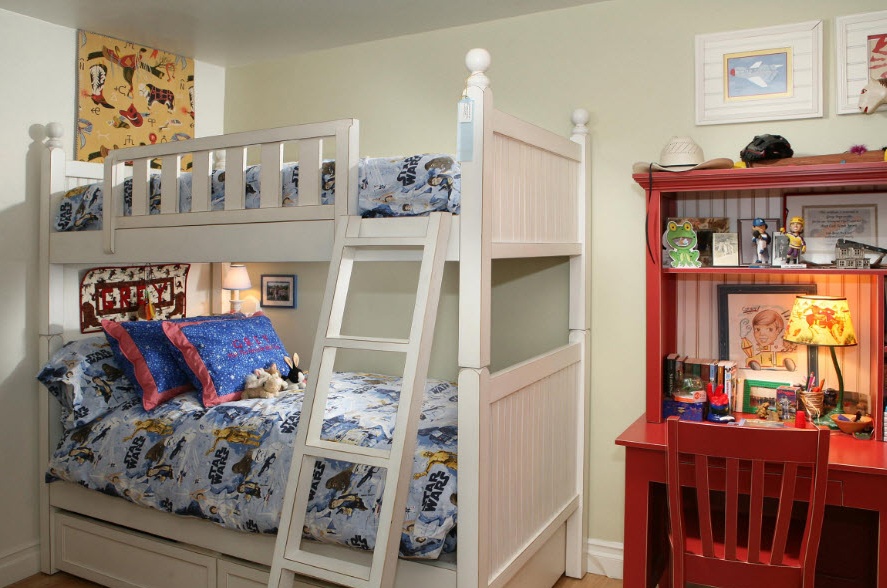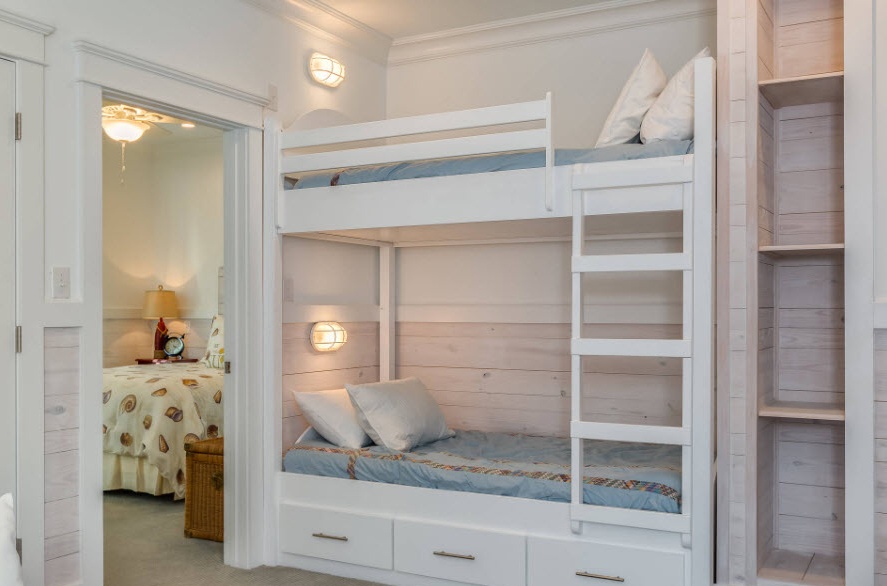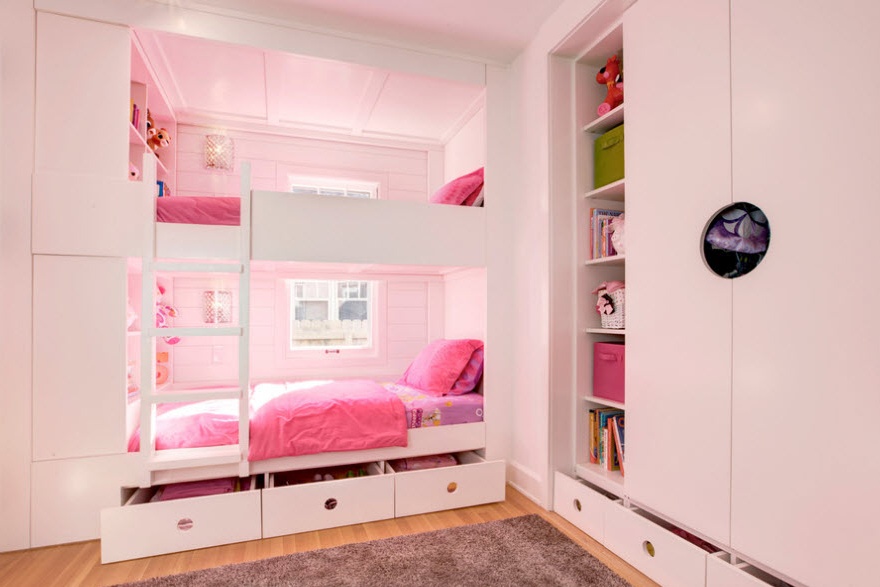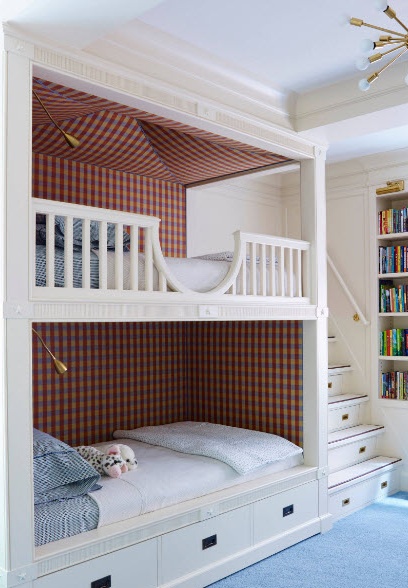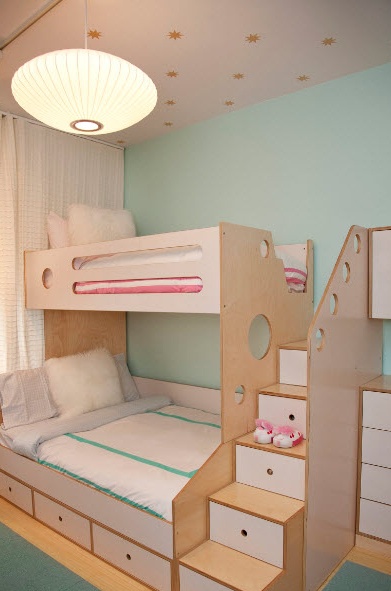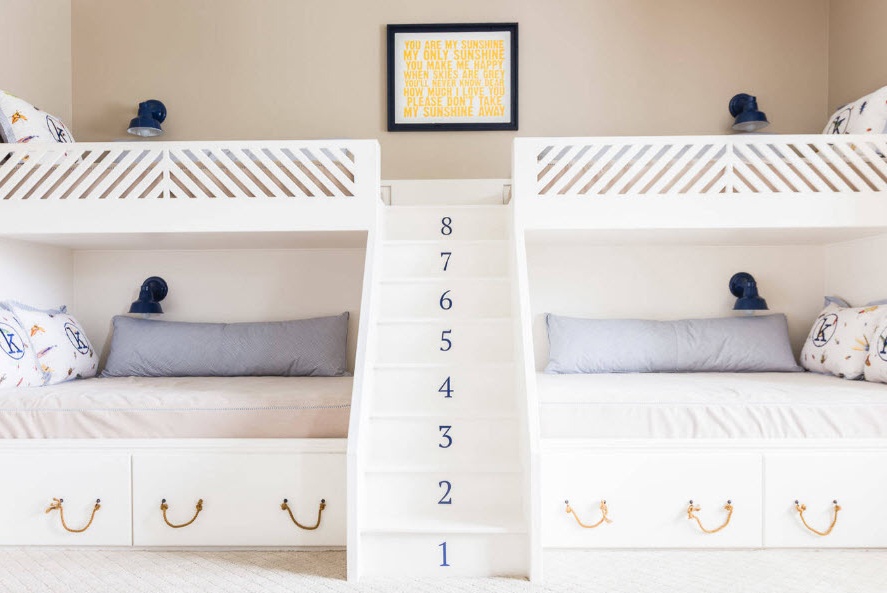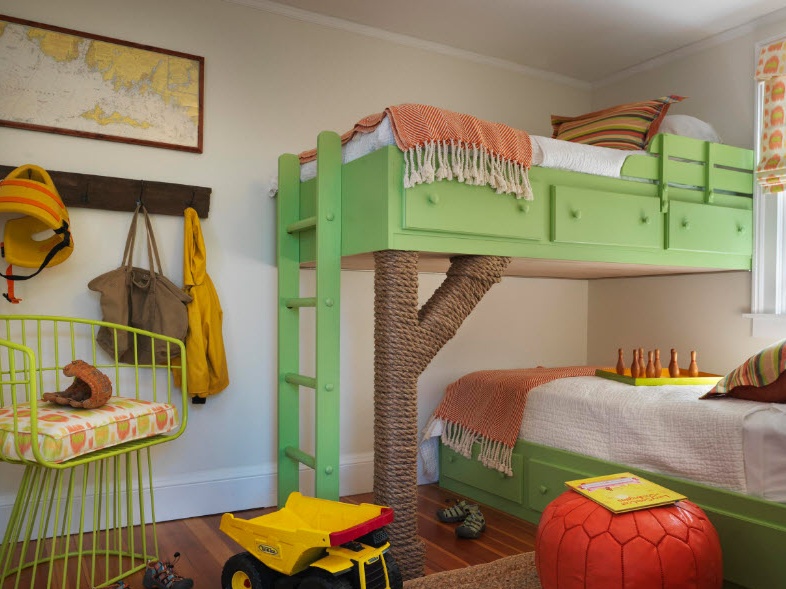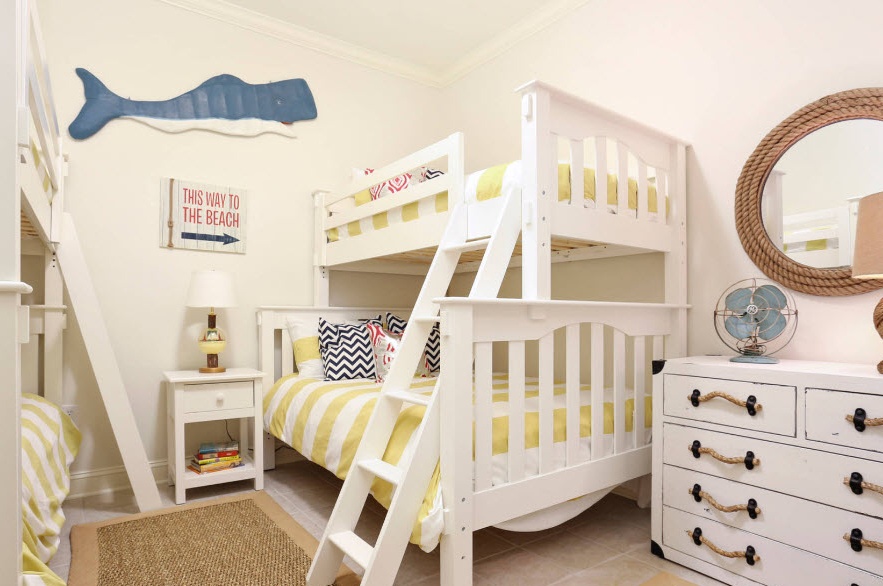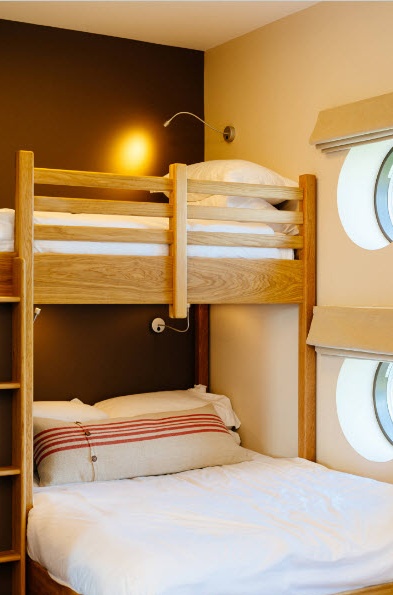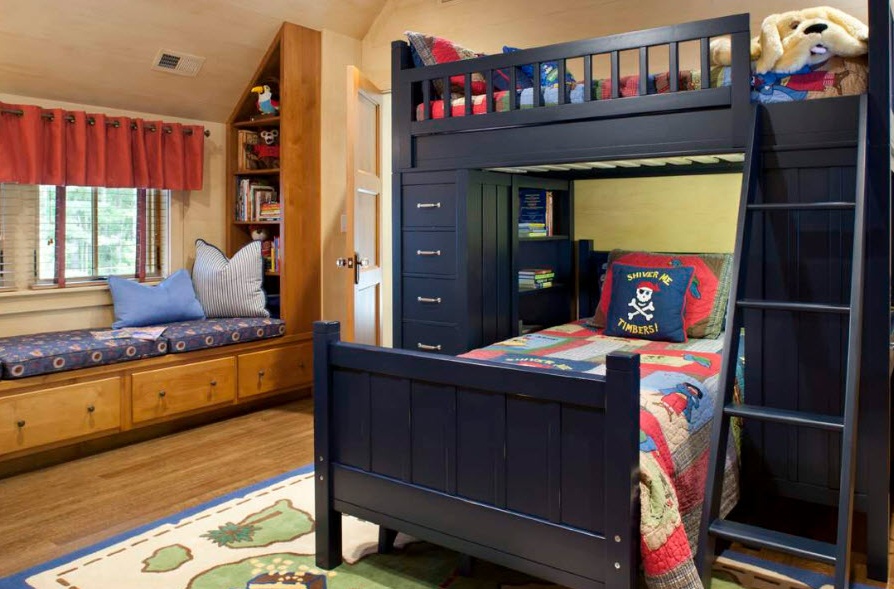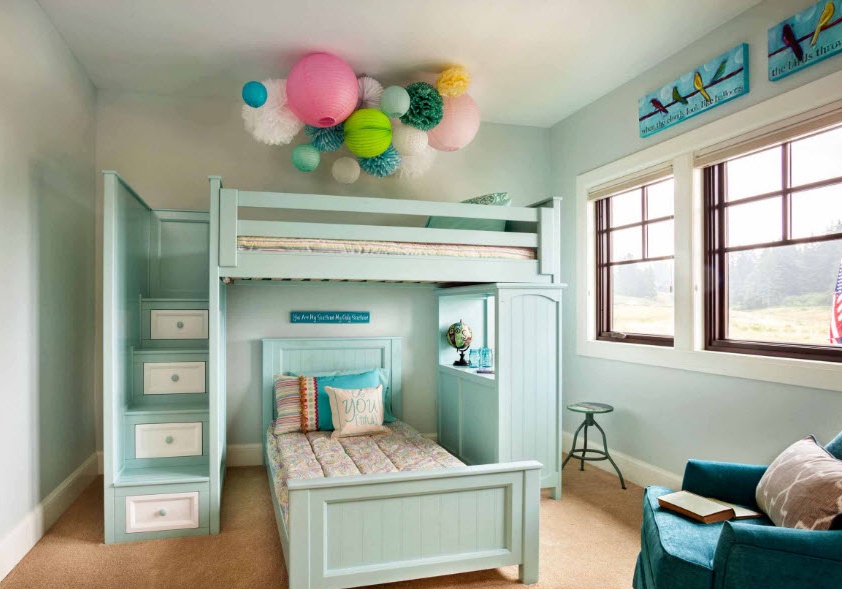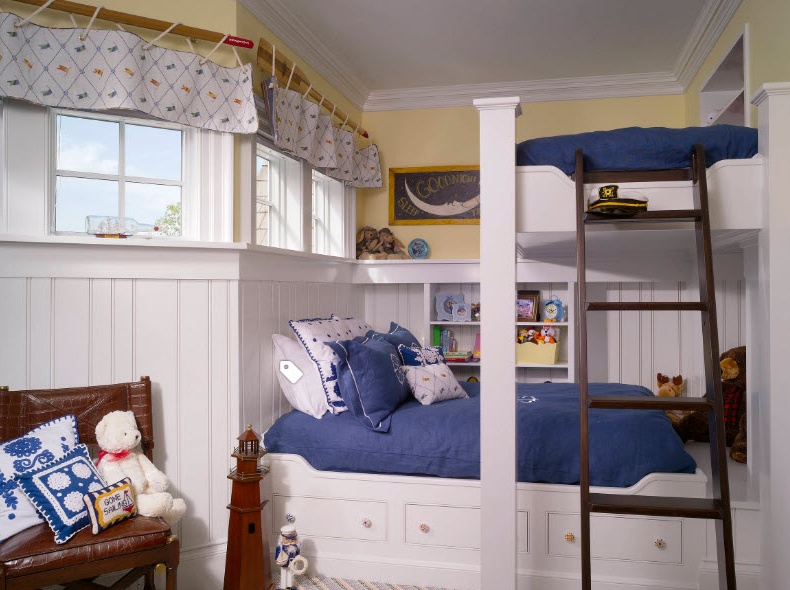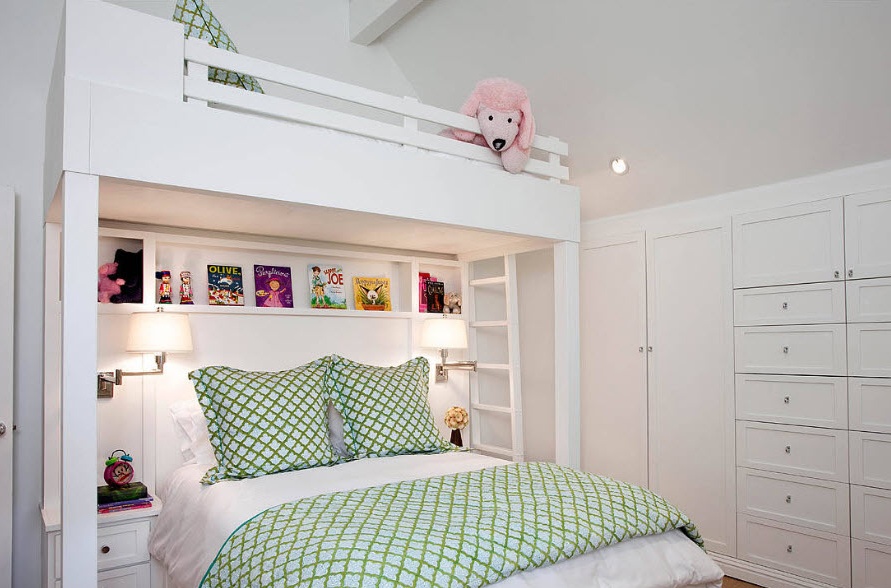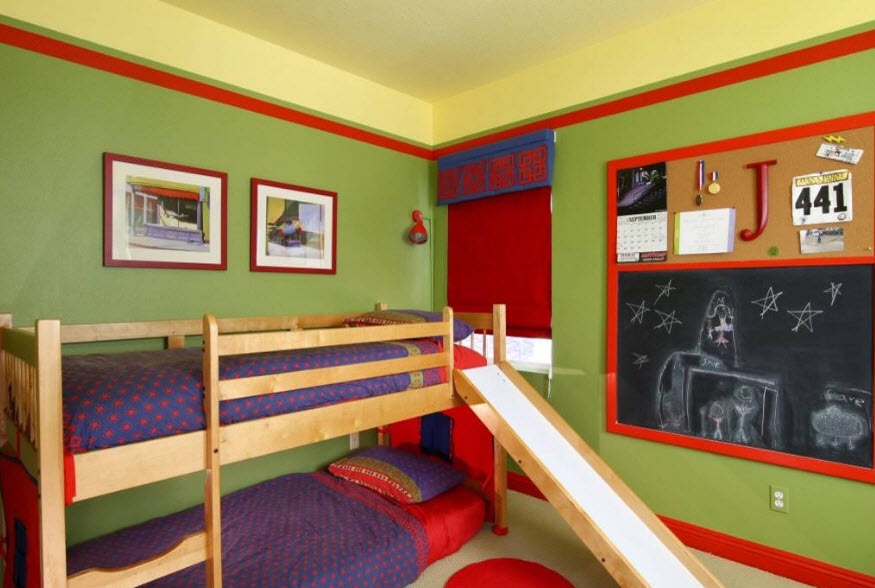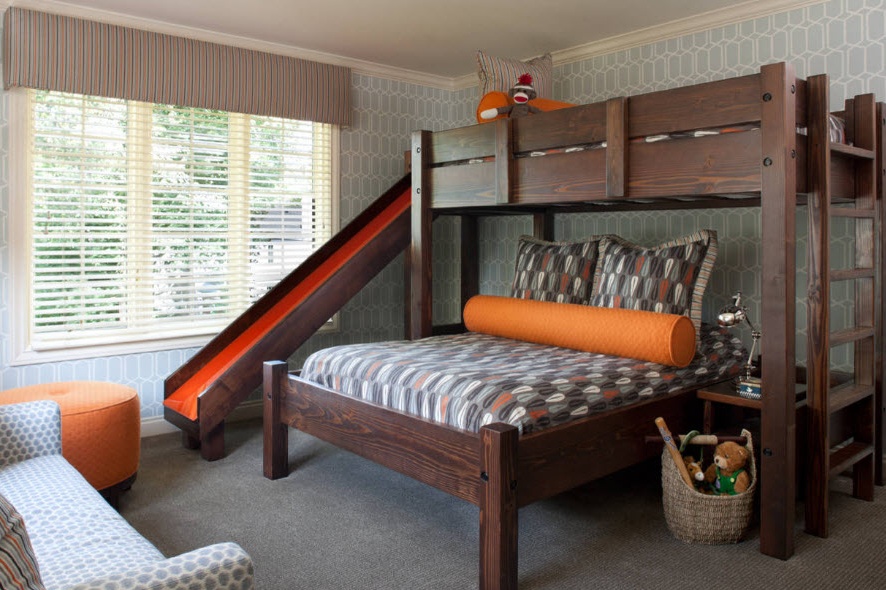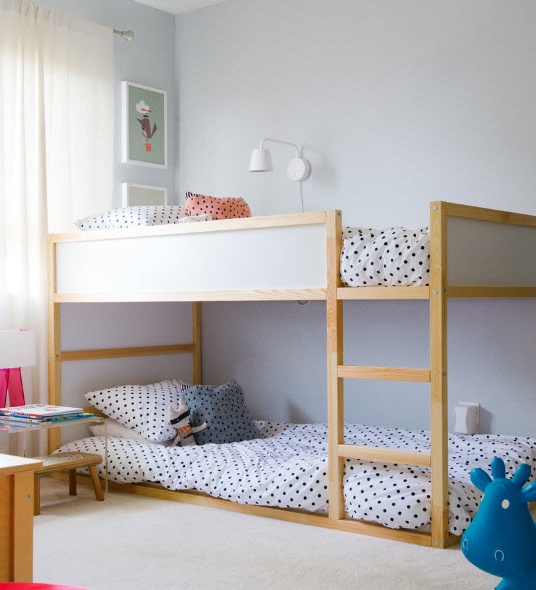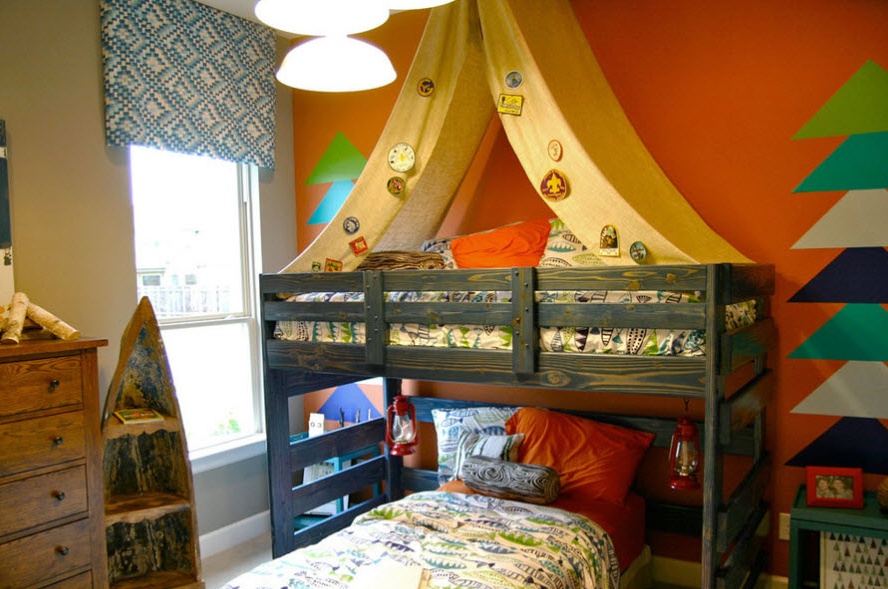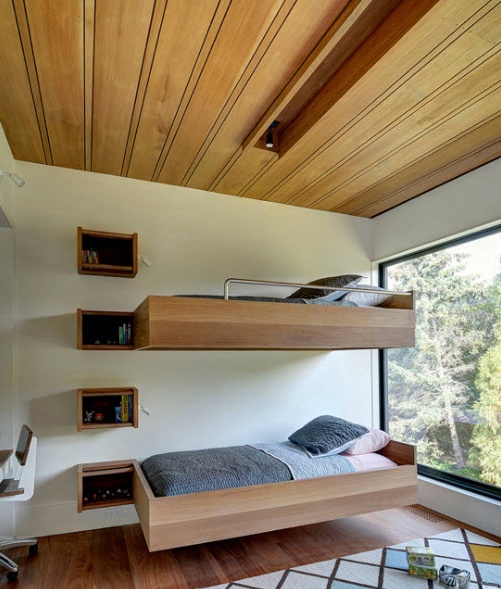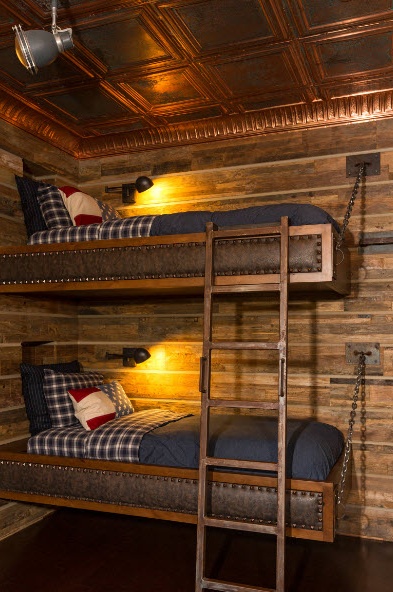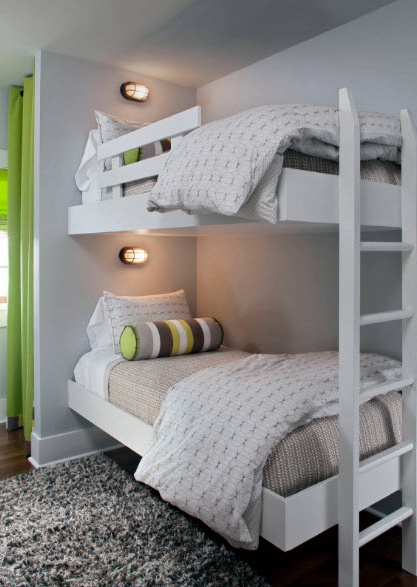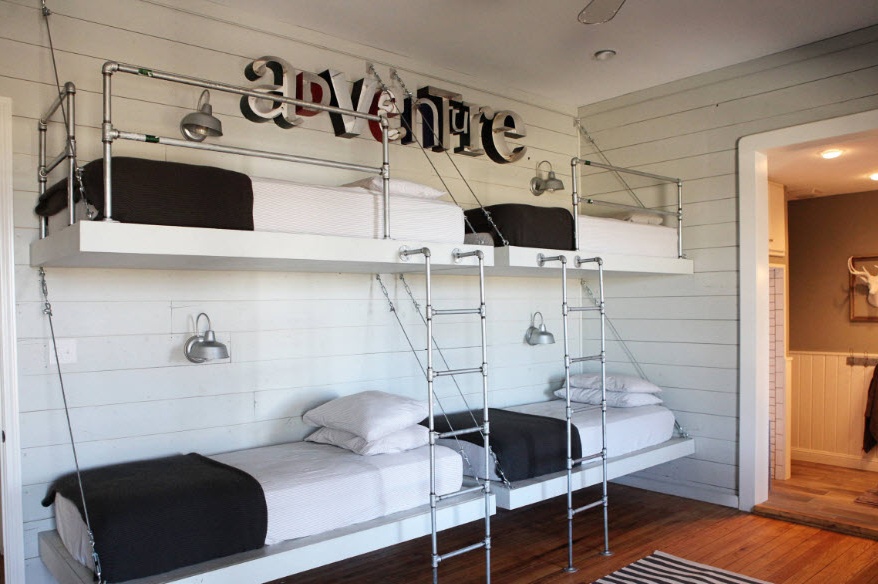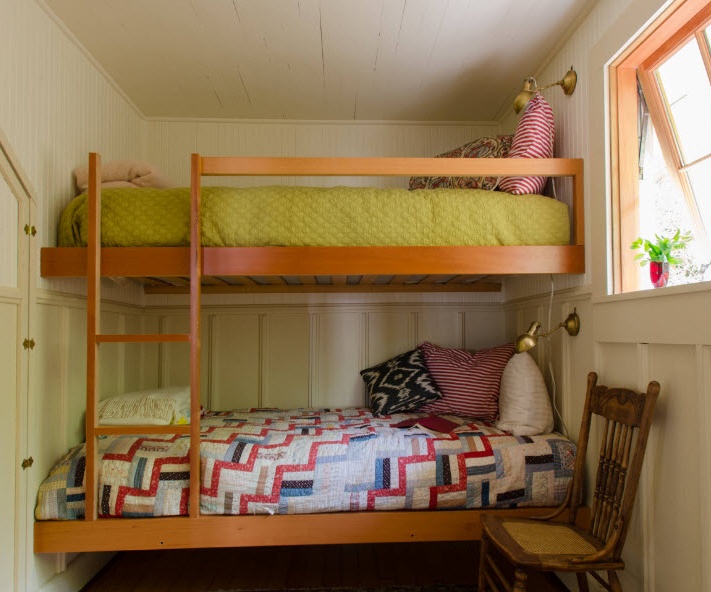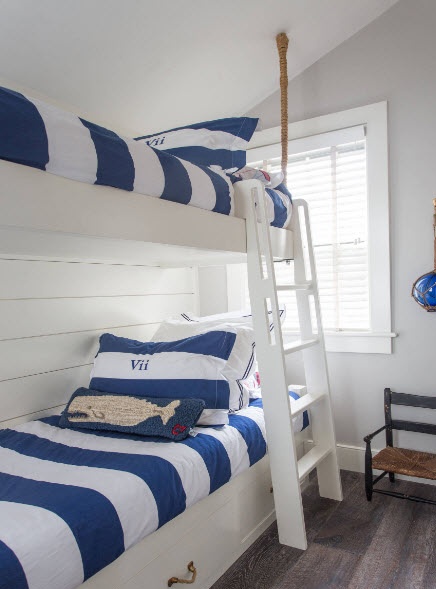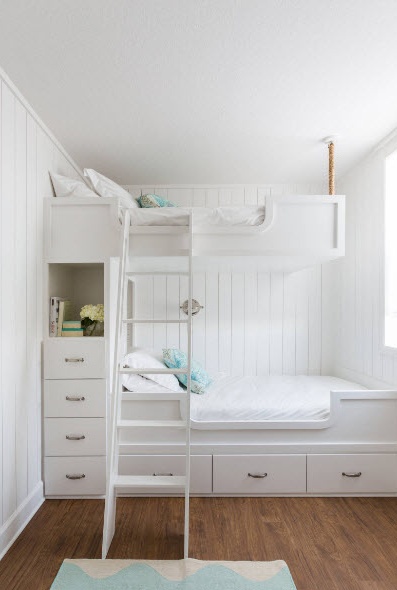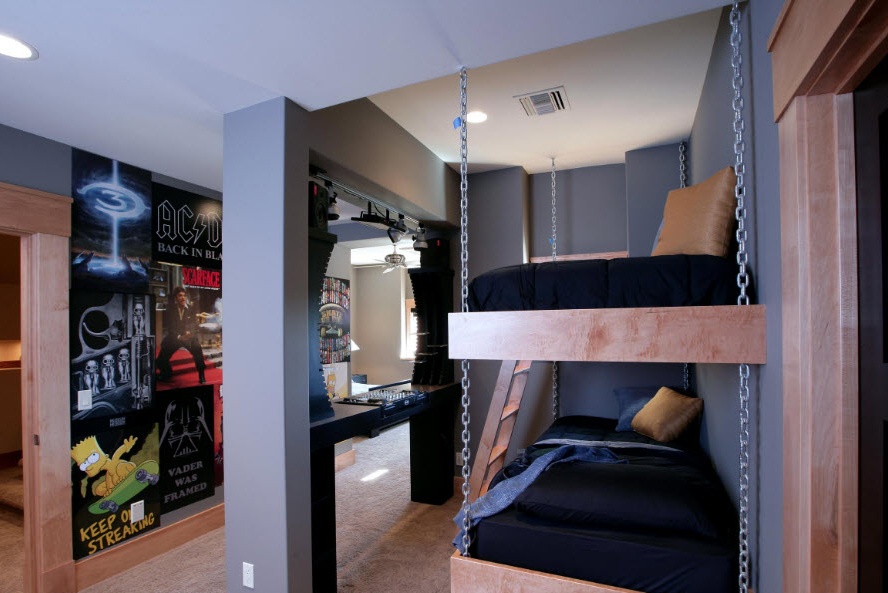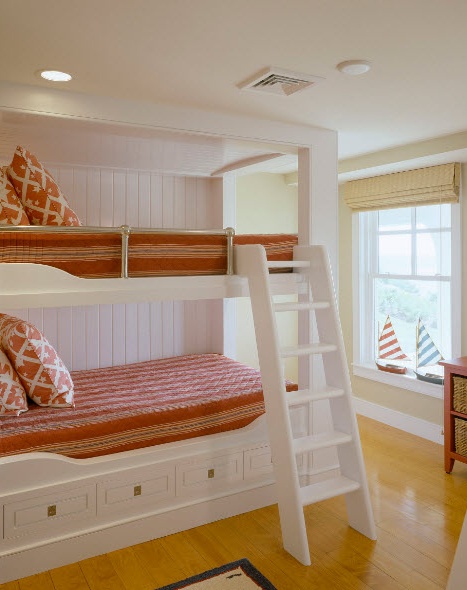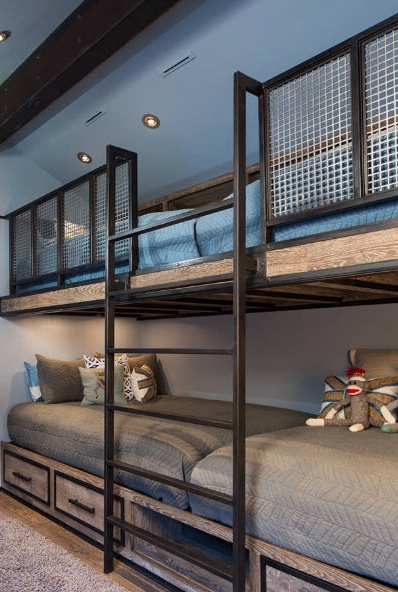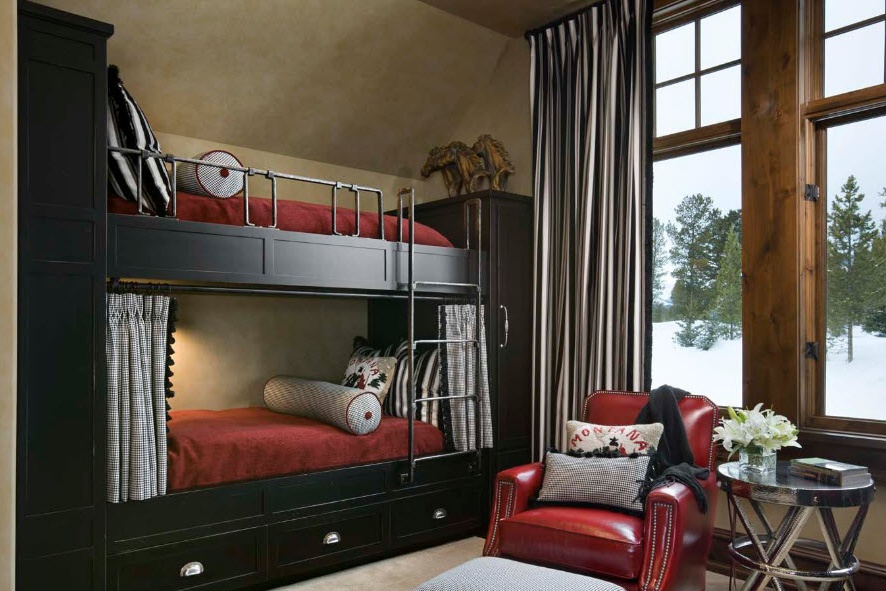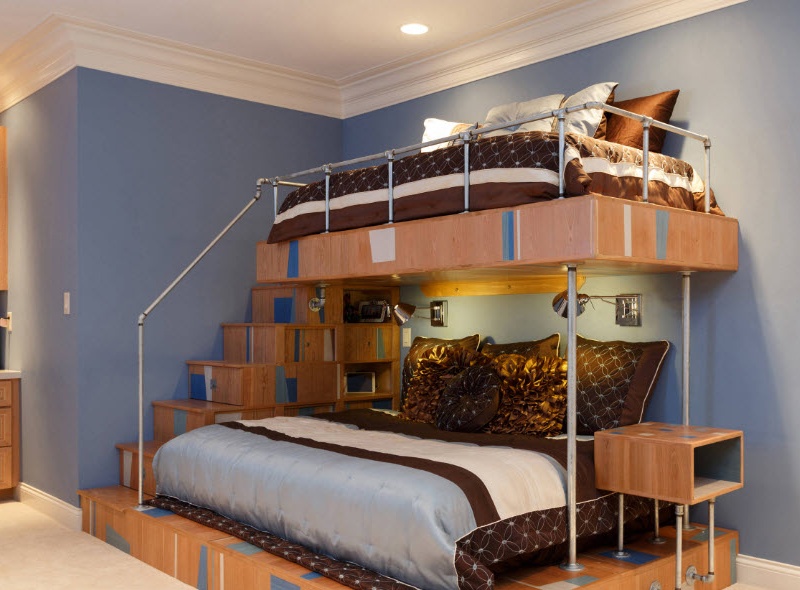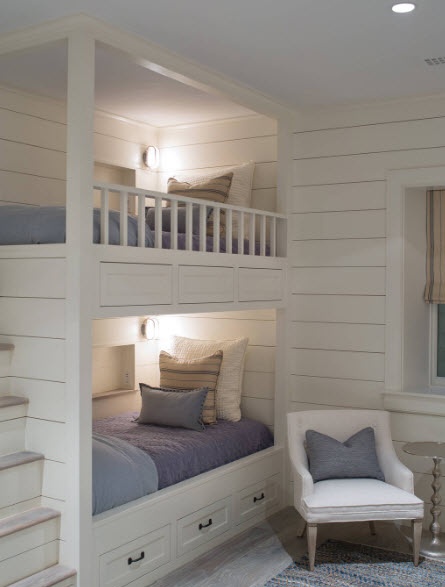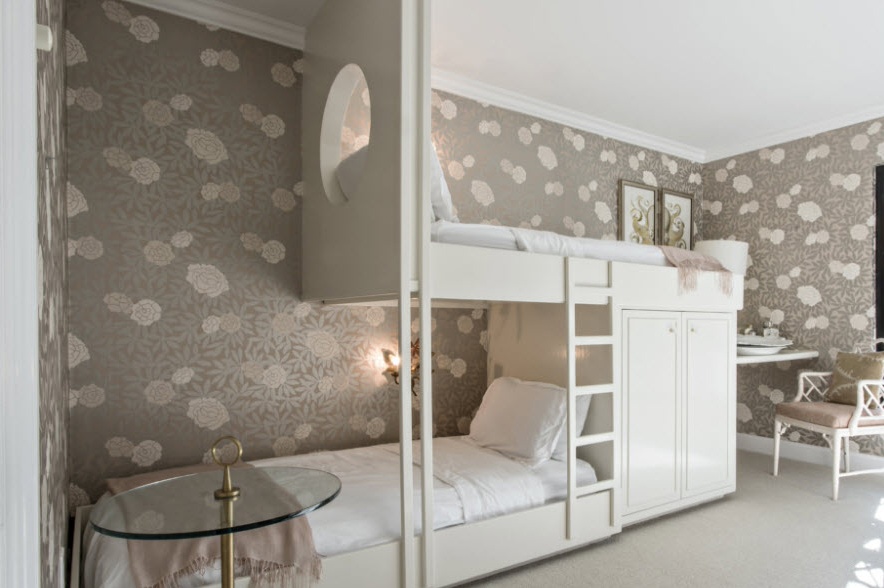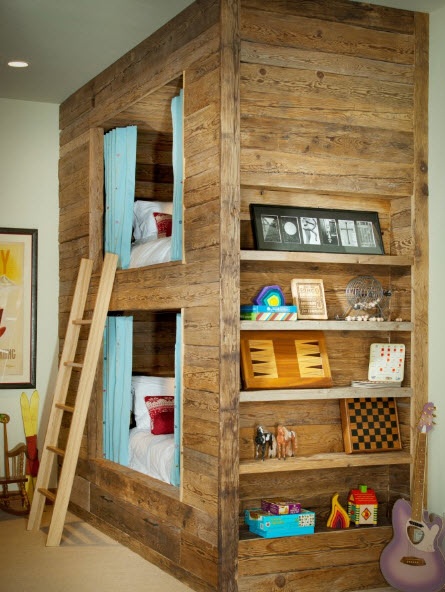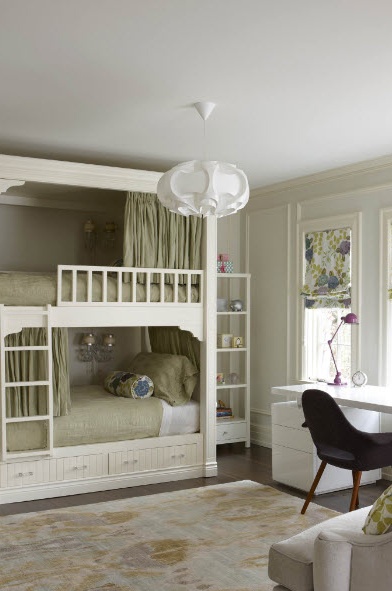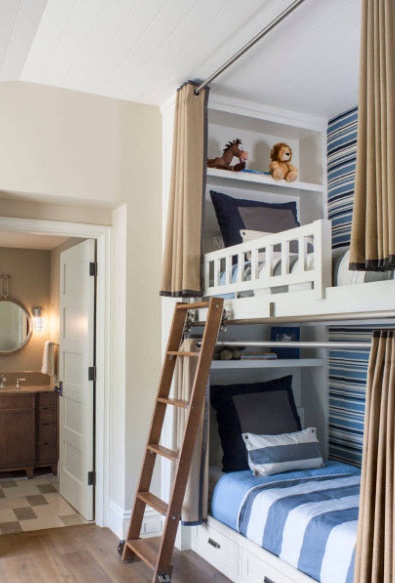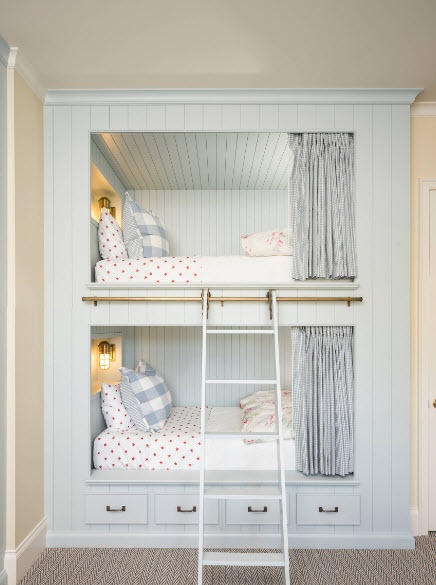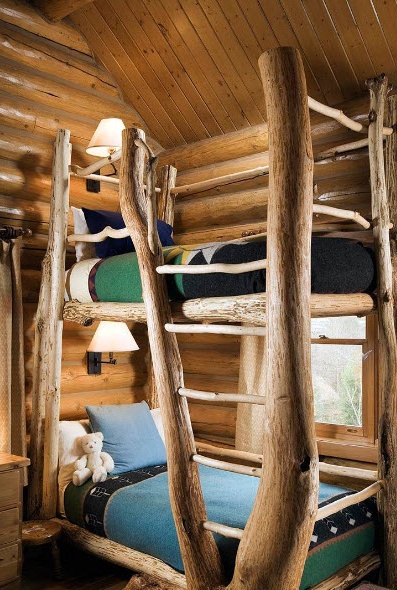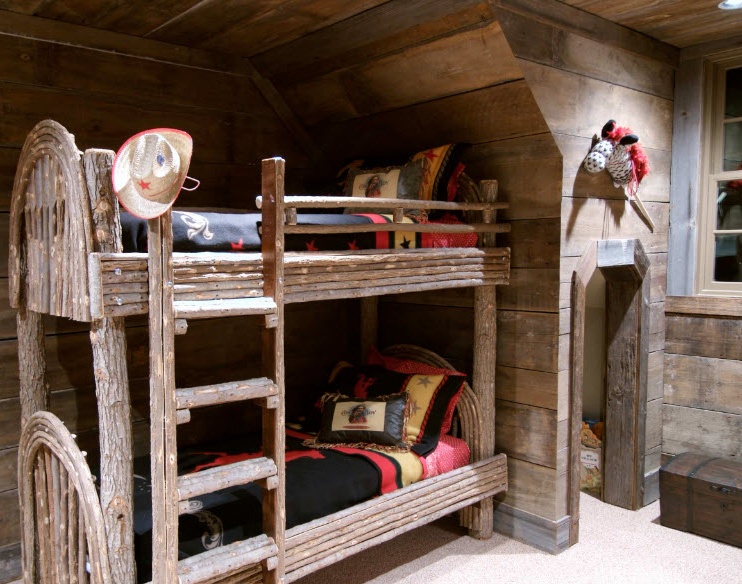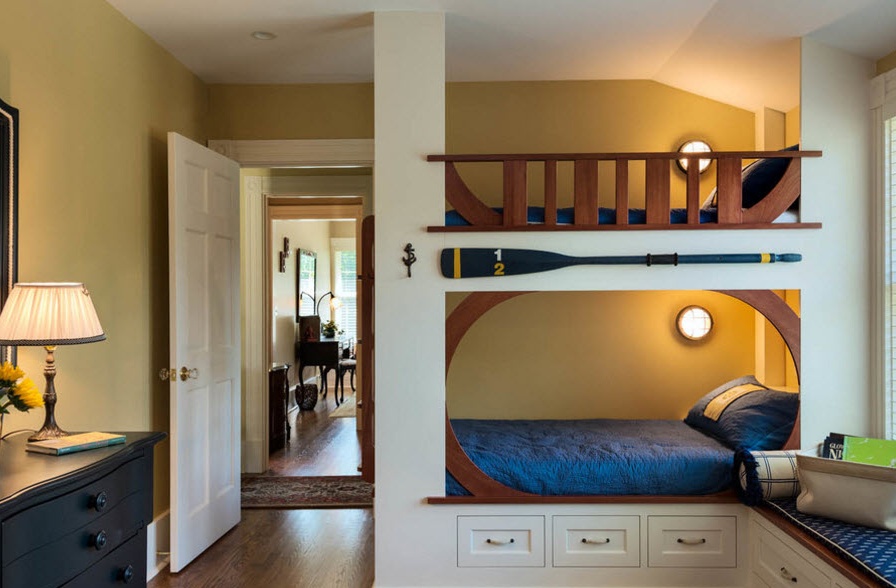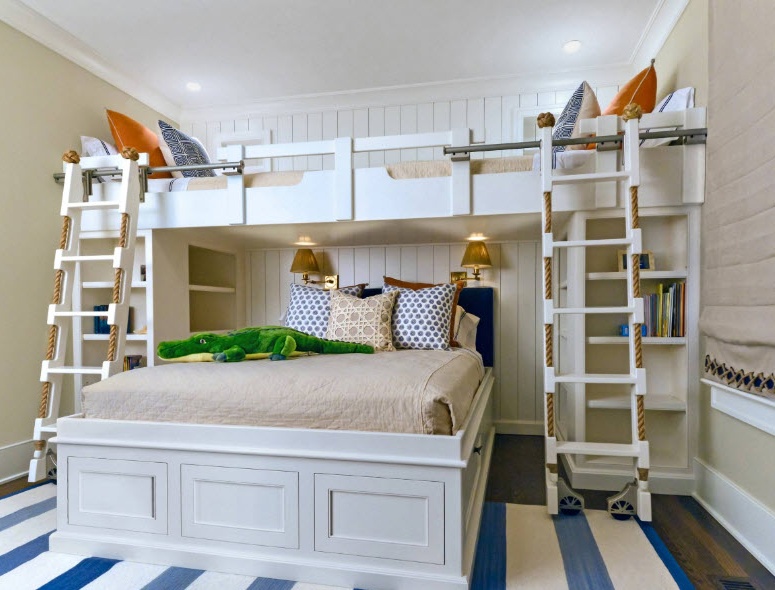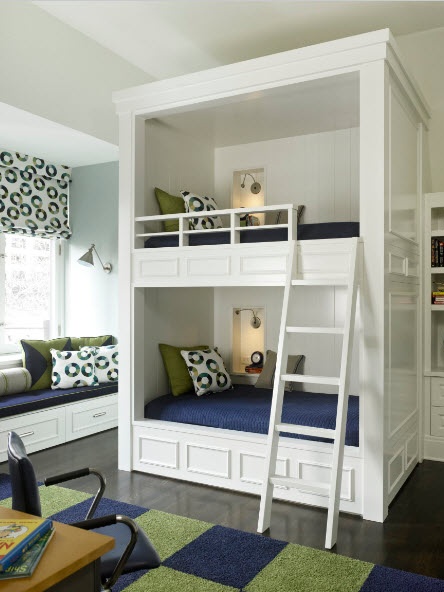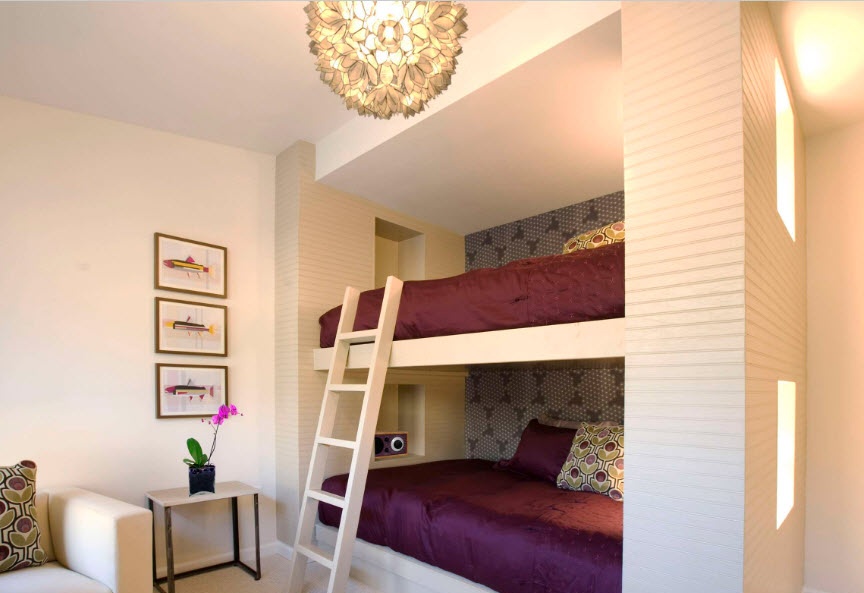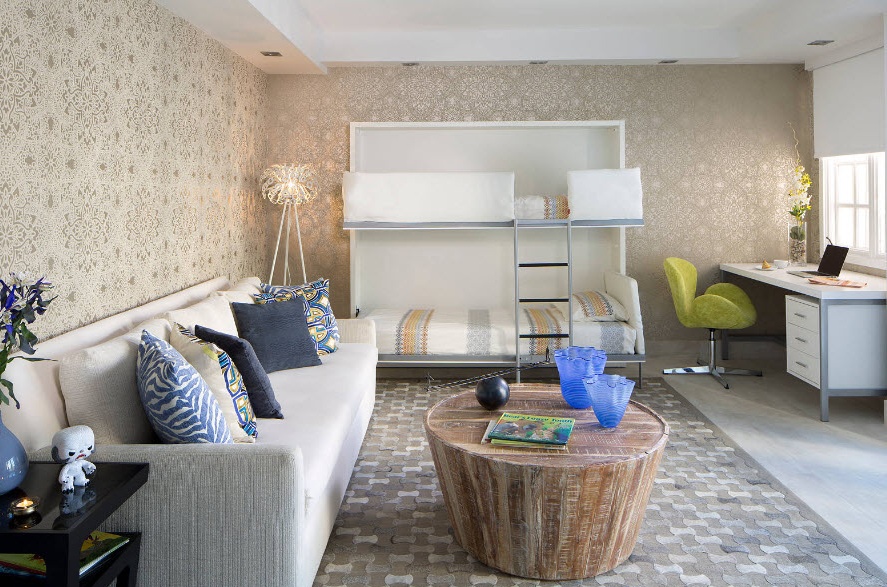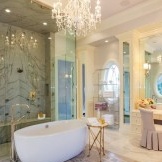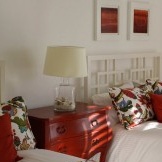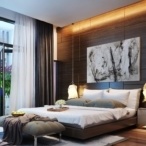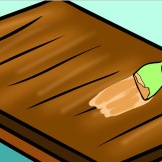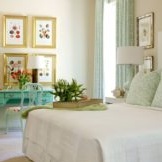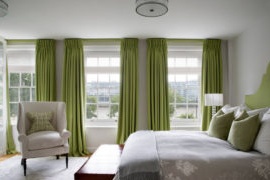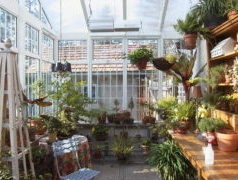Bunk bed in the interior
If you have two or more children, and the children's room is one, and even that does not differ in large area, then a bunk bed is the best way to create sleeping places. But the functions of this incredibly practical, space-saving furniture item do not end there. We suggest you familiarize yourself with hundreds of modern design projects of rooms with bunk beds, find out the selection criteria for the material and method of execution, find inspiration for creating an individual design.
Bunk bed: selection criteria
Beds located in two tiers are mainly used in children's rooms, in which two or more children live. The obvious need to save useful space is relevant not only for small-sized children's rooms, in medium and large rooms, parents also try to leave as much free space as possible for active games, creativity and sports. But at the same time. A bunk bed should not only effectively save the usable area of the room, but also serve as a comfortable and ergonomic sleeping place for children.
So, the bunk bed should be:
- made of quality material, durable and natural;
- have a certificate of the manufacturer, which indicates not only the technological characteristics of the product, but also the maximum height, weight of children;
- the model should be practical (after all, we are talking about a children's room, basically), comfortable, meet the rules of ergonomics (for orthopedics the bed frame itself will be responsible not so much as the base and mattress);
- the bed should be stable - check the assembled model for swinging in the store, because the children will arrange a real crash test for the new piece of furniture;
- children should like the bed and correspond to the chosen style of designing the room for their children (often these criteria are difficult to fulfill and, as an alternative to ready-made solutions, parents have to resort to the individual production of a bed in two tiers);
- the last on the list, but one of the first in terms of importance, the bed should be safe (the upper berth should be equipped with protective sides, the ladder should have a slope and comfortable steps, it is desirable to have a handrail or handles for convenient support when moving between bed levels).
Tier options and bed design
In the production of bunk beds, there are many options that differ not only in design, but also in the very principle of design execution. One of the most popular options for creating a bed in two levels is the classic model, familiar to most of us, in which the beds are parallel to each other at a distance necessary for comfortable placement. This is a universal modification, in which the length and width of the berths, the way of execution of the ladder, colors and decorative elements can vary. But the principle of the bed remains unchanged.
The traditional model of a bunk bed is a universal piece of furniture that organically fits into any interior of a children's room. If we talk about the most universal way of creating a classic two-level bed, you can use natural wood as a material, leaving a beautiful natural wood pattern as a coloring. The tree is easily combined with most shades of the color spectrum and always brings warmth and comfort to the interior of the room.
The second version of the traditional bunk bed model is snow-white. This is a neutral and at the same time universal design that will be appropriate in any stylistic design of the interior of a children's room or any other room.Such a bed will not become an accent of the design of the space, but it will be able to organically complement the existing environment.
A white bed is perfect for a room in which the accent element plays the role of finishing one or more surfaces. In a room with light, neutral walls, furniture can become such an accent. A bright bed will not only dilute the color palette of the room, but also delight the kids’s eyes, because all children love brightness, they need accent spots to focus their eyesight.
In the children's room, where two children live, there is often not enough space not only for organizing sleeping areas, but also for installing storage systems. And in rooms of medium and large sizes, there are never a lot of drawers and cabinets. Therefore, many parents choose a bunk bed model, the lower berth of which is equipped with drawers for storing bedding and other accessories.
Storage systems can be located not only in the lower part of the bed, but also under the steps, in case the staircase is made with spans.
Write on the bars between the steps of the numbers, and the child will not only quickly learn to count, but will also remember the spelling of the numbers ...
Sometimes it is possible to equip storage systems and the upper berth ...
In some cases, it is necessary to purchase a model of a bunk bed, in which the lower level is represented by a double bed, and the upper level is designed for one child. The model is not the most compact, yet a double bed requires more useful room space, but in some cases it is this arrangement of sleeping places that is optimal for a particular family. The upper tier in such a bed can be parallel to the lower ...
Or perpendicular to a double place ...
If there is enough space in the nursery, the bed can be supplemented with a slide. At the same time, a ladder for raising to the second floor should be mandatory. An ordinary bunk bed becomes a gaming complex.
A bed without legs is convenient if a small child is sleeping on the lower tier - he simply has nowhere to fall. But from the point of view of ergonomics, such a model is undesirable to use - the older the person, the higher the berth should be located above the floor (ideally, the mattress touches the knees of the person standing next to the top).
The opposite option for arranging beds is hanging beds that do not have legs, but are located at some distance from the floor. From the point of view of cleaning the premises, this option is incredibly convenient. But the design requires reliable and durable fastening, which means thick walls without voids.
One of the options for a hanging bed is associated with the execution in limbo of only one level - upper or lower.
The upper tier of the bed can be attached not only to the wall, but also to the ceiling ...
Most often, children's bunk beds are made of solid wood or MDF, but may also contain metal elements. Elements from metal can be bed frames, stairs and even sides. Most often, such details are performed in a contrasting color to the entire structure to emphasize the combination and even act as decorative elements.
In some cases, ready-made solutions that can be found in furniture stores do not suit parents. This may be due to the non-standard layout of the room, the original architecture of the room itself or the requirements of the owners (their children) for the organization of beds. Built-in bunk bed allows you to rationally use the available square meters. Structures that are built into a niche or between two walls of a narrow room are most often equipped not only with beds, but also with storage systems. In some cases, the built-in models are a whole complex of sleeping places, work space (desk or computer desk) and storage systems of various modifications (not only drawers under the lower bed, but also shelves, wall-mounted lockers).
It is important for each child to have their own privacy corner. In modest standard apartments, it is difficult to find the possibility of allocating not only rooms, but even areas in the common room for each child. A sleeping place can become such a corner for privacy. In this case, the bed is made in the form of a two-story house - not only sleeping places, but also the walls that enclose the personal space of each child.
Sometimes, in order to create a private area for sleeping and relaxing, it is enough to equip both levels of the bunk bed with curtains. This method is suitable for embedded structures and models having walls on both sides.
Everything that surrounds a child becomes for him a method of knowing this world. Even a bed can be not only a place for sleeping and relaxing, but also a kind of exercise machine. The thematic execution of this piece of furniture will help to create a special atmosphere of a child’s room and an occasion for the development of imagination in a child.
In most cases, a bunk bed is located along one of the walls of the room, sometimes in a niche or, in the case of a narrow room, between two walls. But in a spacious room, a high bed in two tiers can be used as a zoning element to divide the room into functional segments. Given that at least two children live in the room, creating your own zone for each of the children will be a great way to distribute space.
Bunk bed not only for children's room
A model of a bed with two sleeping places located in two tiers can be used not only for organizing a sleep and relaxation zone in children's rooms. This versatile way to save usable space can be used in private homes to arrange sleeping places in the guest room. You can “hide” two tiers of berths in the living room cupboard and open it if necessary.
For similar purposes, you can use a folding bunk bed. During the day, the room can serve as a living room or a game room (the bed “hides” in the closet), and at night it becomes a bedroom.

